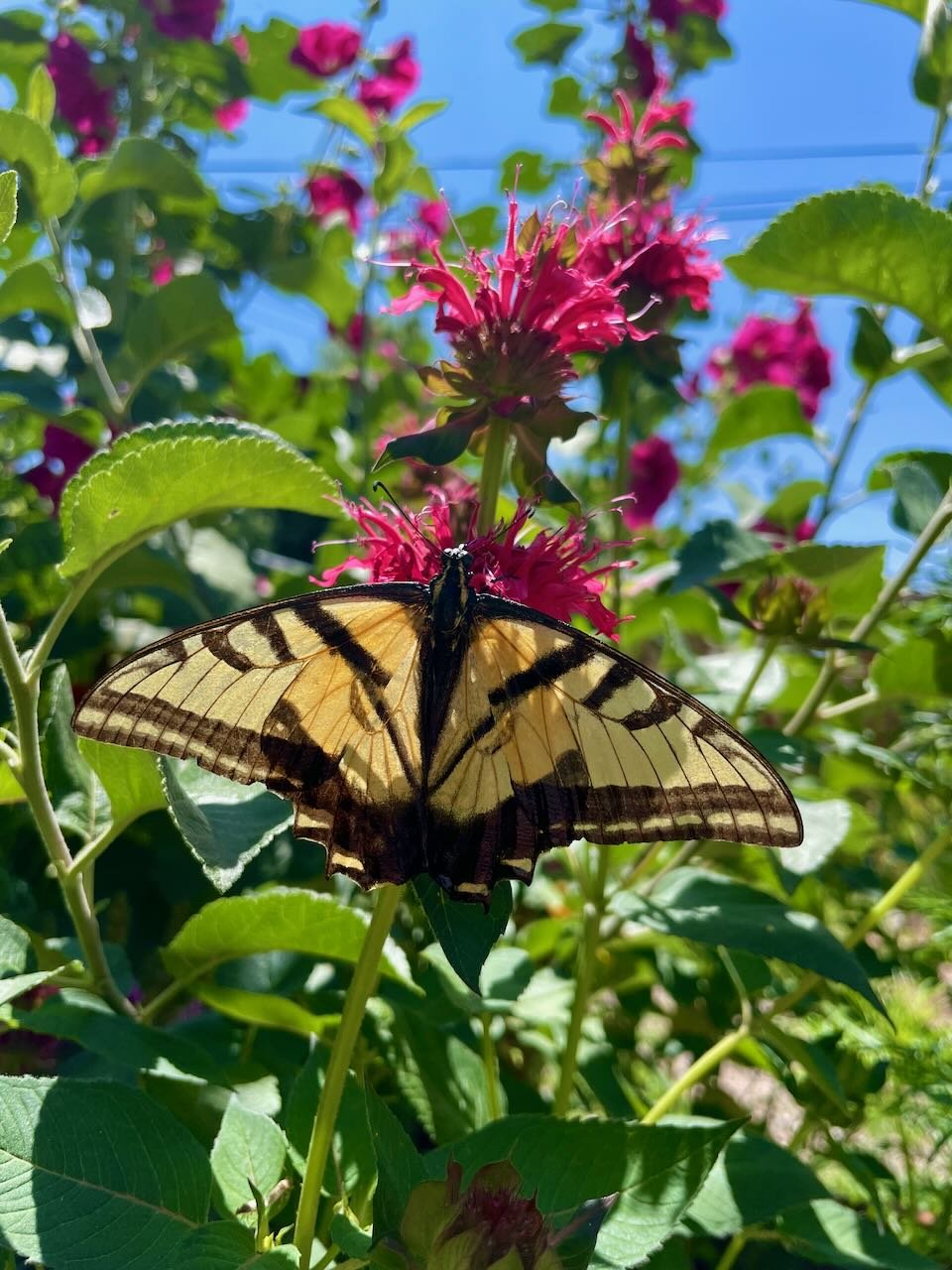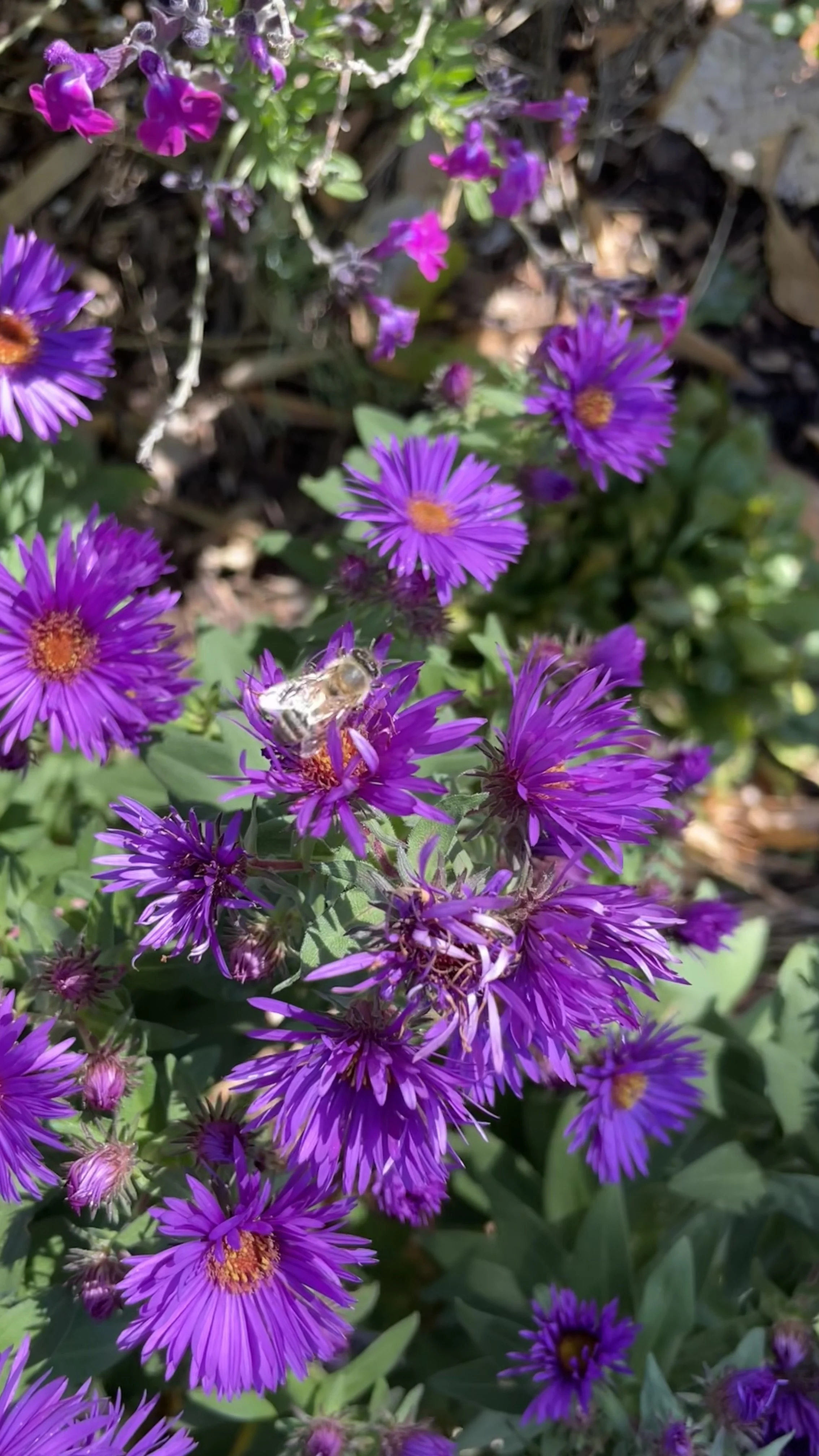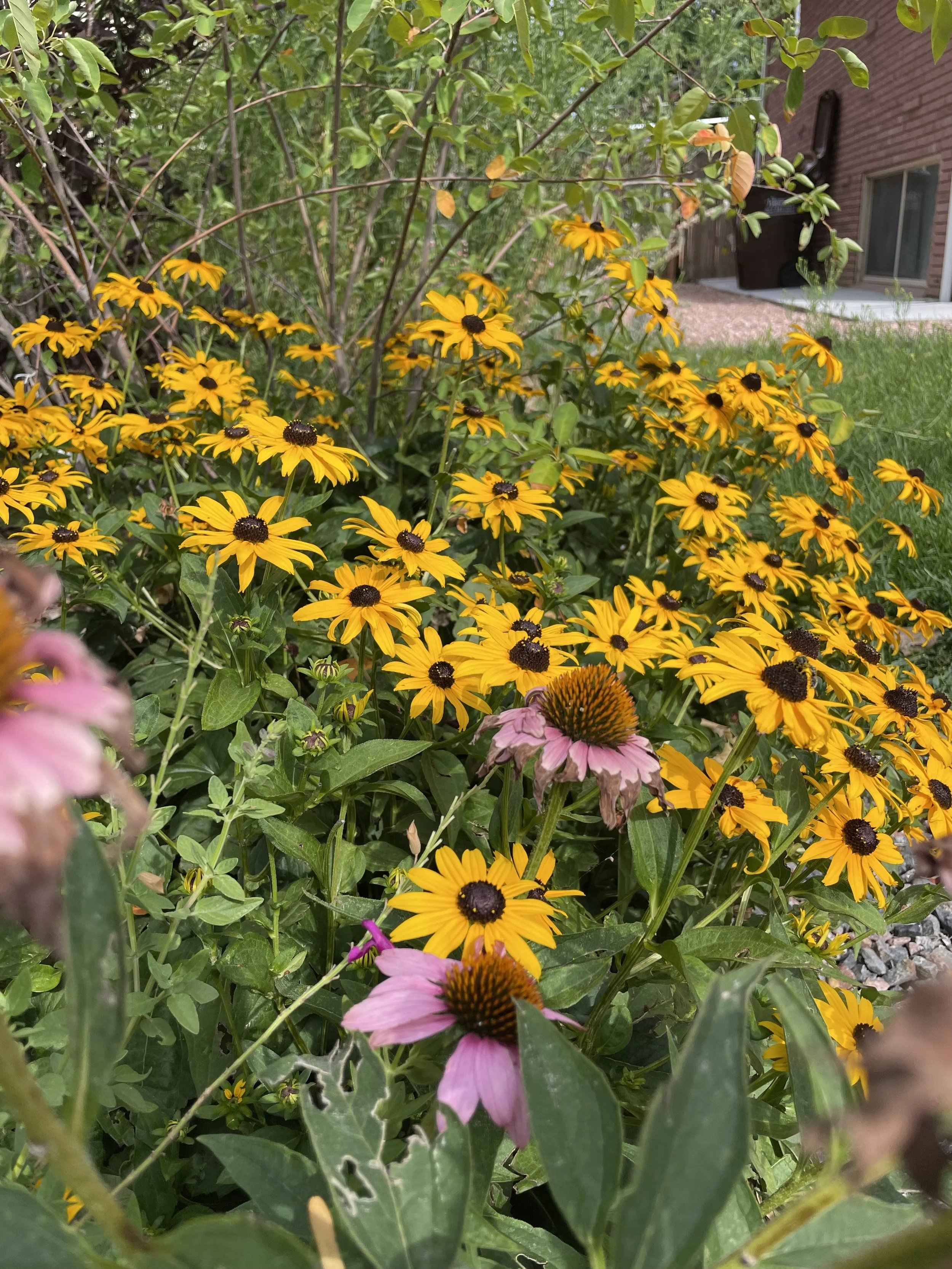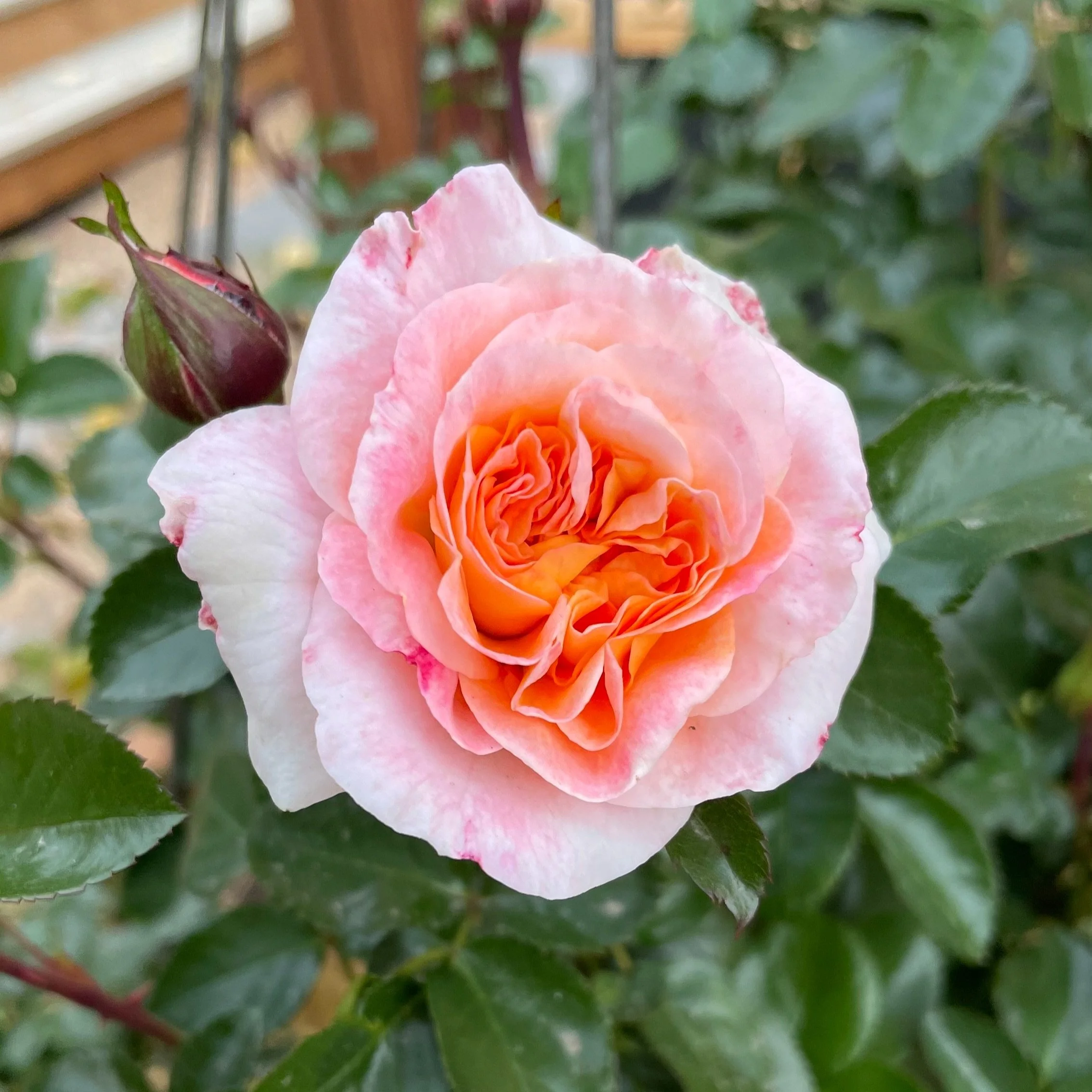How I Assessed My Garden’s Support for Pollinators
A Step-by-Step Guide
One of the most important things you can do to support wildlife is to have flowers in your garden blooming consistently from early Spring to late Fall – or as close as you can get with first and last frosts. But planning for this takes time and care! So in 2024, I set out to document the first time every plant in my garden bloomed – in chronological order. I wanted to see what bloomed when – and also if I had weak spots in my planning so I could supplement in the following year.
How to Observe your Garden
Starting as soon as the first flowers bloomed, I made a point to walk my garden every Monday morning looking for new blooms. I am in my garden every single day, but I’m not always out with that kind of intention, so each Monday morning, I made a circuit of the garden — looking for plants that were now blooming that hadn’t been blooming before. I had to set some rules: I couldn’t garden, cut back, or do anything else while I was walking. Otherwise I might get too distracted. And the photos weren’t the point — just quick snapshots. Nothing staged or posed. Just documentation.
After my quick walk, I added the blooms to my Instagram stories, labeled them with the plant variety. I created a highlight for each month. But you could do this in your photos app — creating a folder for each month to keep everything organized.
Tips for Observation
Set a regular time and day to make your observations.
Take photographs each time.
Record the species and variety in the photo’s metadata.
Don’t allow yourself to do anything else — just make observations during your dedicated time.
Work from spring to fall or, if you have blossoms year-round, for a full calendar year
Use a plant-identifying app like PlantNet if you aren’t sure what your plants are.
Make other observations in your copy of Garden Notes.
How to Interpret your Results
I waited until the end of the year to really look at all of the data. I didn’t want to make any assumptions mid-way through. And the results were so interesting! I looked at each month, but then I looked at the year it its entirety — making a spreadsheet of every species month-by-month.
I asked myself these questions:
Which months have the fewest species blooming?
Which months are most abundant?
Which months have the most native North American species blooming?
Which months have the fewest native North American species blooming?
How can I improve these results in the coming years?
The results of this observation will help shape my gardens and gardening for years to come. I can now see months where I have bigger holes – few plants blooming, fewer plants growing – and months where I have abundance. And I can be more strategic about which plants I buy for the coming years.
A Few Notes about this List
I only documented the first flower – not how LONG they flowered. Some of these plants flower for months.
If a plant is repeated, that's because I cut it back, and then documented the repeat flowering. OR it flowered at distinctly different times depending on where it was planted (south-facing vs. north-facing, for example). OR I have multiple varieties but don't know the different names anymore.
I didn't document every variety within a species. For example, I have eight or nine varieties of peonies and more than twenty types of rose and twenty types of dahlia. They aren't all represented.
I didn't include flowering veggies, for some reason! But of course, bees were all over my tomatoes and cucumbers and other vegetables and herbs. I just didn't even think to include them!
And I know that I missed some. It’s not perfect, but it is a really good snapshot of a year’s worth of blooming.
I am using Latin names wherever possible, because they are more accurate if you want to find the same varieties.
In planning my garden I am to have 80% of my plants to be North American species or cultivars. But that is 80% by volume — so if I purchase 10 plants, 8 of them should be North American natives. But all 8 of those might be the same species, and the other two plants may be different species. I have a wide range of species in my garden, but I tend to plant big blocks of the North American natives where I might have one or two of the more exotic varieties.
My Garden Blooming List
What Bloomed When in 2024
Note: Names in bold are either native North American species or are cultivars of such. Commonly, native North American species are defined as plants which were in place in North America before European colonization, however Native Peoples cultivated and bred plants as well, so that definition is, by nature, murky at best.
-
Iris reticulata
Narcissus King Alfred
Chionodoxa forbesii
Brunnera macrophylla
Narcissus Holland Sensation
-
Narcissus Barrett Browning
Fritillaria imperialis 'Rubra Maxima'
Tulips
Muscari
Amelanchier canadensis
Narcissus Jamestown
Tulip Foxy Foxtrot
Narcissus Bridal Crown
Narcissus Baby Boomer
Parade Darwin Tulip
Narcissus Golden Echo
Alliums
Lilac Wonder Wildflower Tulip
Iberis sempervirens 'Purity'
Geranium tuberosum
Brunnera macrophylla
Veronica chamaedrys
Phlox subulata
Prunus virginiana 'Canada Red'
'Splendens' Armeria (Armeria maritima)
Nepeta x faassenii 'Walker's Low'
Tulipa bakeri 'Lilac Wonder'
Tulipa humilis 'Little Beauty'
-
Narcissus regeneration
Camassia leichtlinii Caerulea
Allium aflatunense 'Purple Sensation'
Dicentra spectabilis
Tulips
Cornus sericea
Pansies
Salvia sylvestris 'Caradonna'
Geum Tempo Yellow
Aquilegia coerulea
Tulips
Lunaria annua
Allium 'Globemaster'
Narcissus Yellow Cheerfulness
Narcissus Double White Lion
Solidago multiradiata
Nepeta x faassenii 'Walker's Low'
Narcissus 'Tete-a-Tete'
Paeonia mascula Coral Peony
Aquilegia 'Swan Violet and White'
Aquilegia chrysantha 'Denver's Gold'
Paeonia lactiflora Sarah Bernhardt
Heuchera x bryzoides 'Weston Pink'
Red Vein Crabapple
Cerastium tomentosum
Hymenoxys scaposa
Penstemon pinifolius 'Luminous'
Camassia leichtlinii 'Sacajawea'
Paeonia lactiflora 'Pink Hawaiian Coral'
Roses
Salvia pachyphylla
Chives
Centranthus ruber
Phacelia campanularia
Layia platyglossa
Veronica chamaedrys
Penstemon strictus
Paeonia lactiflora 'Coral Charm'
Paeonia lactiflora 'Shirley Temple'
Siberian Iris
Geranium sanguineum 'Vision Violet'
Geranium 'Johnson's Blue'
Gaillardia aristata
Rose: Honey Nectar
Rose: Darlow's Enigma
Peony: Festiva Maxima
Peony: Hawaiian Coral
Rose: Bolero
Rose: Bullseye
Baptisia australis
Penstemon pinigolius compactus
Physocarpus opulifolius
Allium siculum 'Ucria'
-
Iris reticulata
Armeria maritima 'Morning Star White'
Eschscholzia californica
Trifolium pratense
Gilia capitata
Peonies
Scrophularia macrantha
Centranthus ruber 'Coccineus'
Campanula rotundifolia
Rose: Tchaikovsky
Rose: Crown Princess Marguerite
Peony: Koningin Wilhelm
Rose: Abraham Darby
Rose: Tequila Supreme
Rose: Louise Clement
Rose: Easy Going
Lamium maculatum
Knautia macedonica
Italian Ranunculus
Rose: Lady of Shalott
Campanula patula
Cilantro
Borage
Asclepias tuberosa
Anethum graveolens – bouquet dill
Nymphaea “Colorado”
Lilium bulbiferum
Canna Lilies
Scabiosa columbaria 'Butterfly Blue'
Asclepias speciosa
Echinacea purpurea
Penstemon 'Dark Towers'
Phlox
Allium sphaerocephalon
Papaver rhoeas
-
Achillea millefolium 'Balvinred'
Tithonia rotundifolia
Antirrhinum majus 'Orange Wonder'
Cerinthe major var. purpurescens 'Kiwi Blue'
Tagetes patula 'Lemon Drop'
Tagetes patula 'Red Meamorph''
Monarda didyma 'Raspberry Wine'
Cleome serrulata
Veronica liwanensis
Salvia 'Ultra Violet'
Echinops bannaticus 'Blue Glow'
Amaranthus caudatus
Amaranthus hypochondriacus
Echinacea x 'Cheyenne Spirit'
Echinacea purpurea 'Magnus'
Cosmos Bright Lights
Helianthus annuus
Rose: Koko Loco
Nasturtium
Geranium Rozanne
Rose: Distant Drums
-
Echinops bannaticus 'Blue Glow'
Allium cernuum
Echinacea purpurea 'PAS702917': Pow Wow Wild Berry
Rudbeckia hirta
Rudbeckia fulgida var. sullivantii 'Goldsturm'
Coreopsis tinctoria
Nymphaea 'Colorado'
Zinnias
Caryopteris clandonensis 'Dark Knight'
Sedum telephium 'Autumn Fire'
Salvia azurea
Petunias
Sunflower Rouge Royale
Monarda fistulosa
Rudbeckia triloba 'Blackjack Gold'
Dahlia
-
Sunflowers
Dahlias
Asclepias tuberosa
Ceratostigma plumbaginoides
Solidago multiradiata
Symphyotrichum novae-angliae 'Honeysong Pink'
Salvia 'FlowerKisser® Dark Shadows' (Salvia x 'WWG01')
Solidago rigida
Sphaeralcea munroana
Symphyotrichum novae-angliae 'Purple Dome'
'Symphyotrichum novi-belgiiProfessor Kippenberg'
-
Dahlias
Gaillardia aristata 'Amber Wheels'
Campanula rotundifolia Thumbell™ 'Blue'
Rose: Distant Drums
Calendula officinalis 'Zeolights'
Achillea millefolium
Rudbeckia fulgida var. sullivantii 'Goldsturm'
Calendula stellata
Take a peek into all of the results!
My Observations
One of the revelations in doing this project was that my North American native species are largely late bloomers. Now this is partly because they are almost all herbaceous perennials, so they put on lots of growth in the spring and early summer, but don't bloom until later. So I need to work on building up a stock of early blooming plants – especially trees and shrubs – including more Amelanchier canadensis and Prunus virginiana 'Canada Red'.
Additionally, August is a thin time – in the heat of the month, very little is actually blooming from late-July to early-September. So I'll be looking for more flowers that bloom in heat. This is partly due to cutting back plants like the Achillea millefolium which bloom in late-June and early-July and then were cut back for another fall flush. So I need to intentionally seek out blooming plants for that July-August period of the summer.
We had a year of very little rain with an extremely hot and dry summer, so that may have delayed blooming in many plants and probably decreased the number of flowers overall. I do some irrigation, and irrigated more than usual over the summer. But because it was so far below “normal,” some plants certainly suffered. That is part of why I focus on native plants with low water needs.














